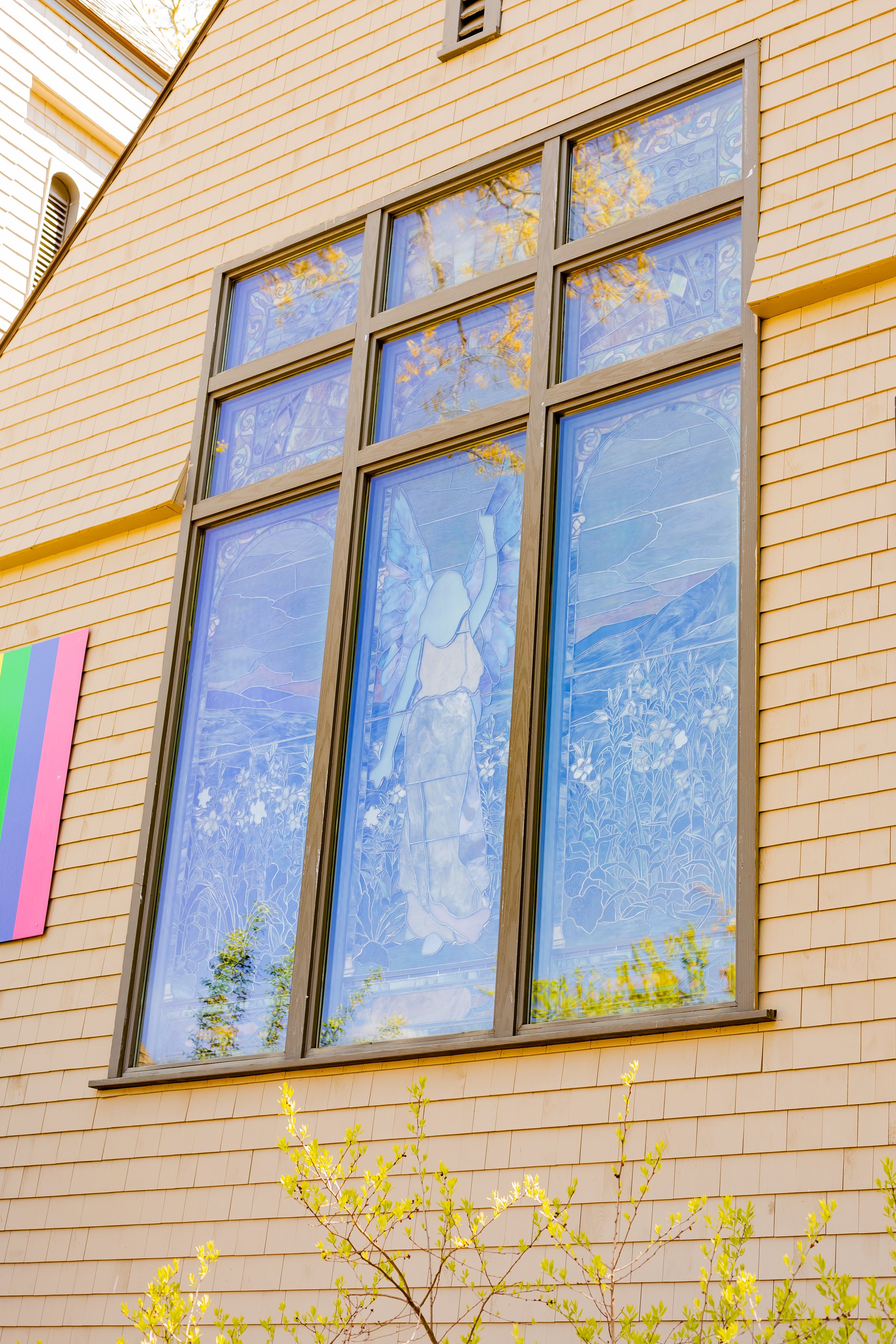angel of the lilies





The Angel of the Lilies represents a revolution in stained glass art that would raise its popularity to a height not seen since medieval times.
Stained glass was largely unknown in Puritan New England. When it came into fashion in the 1830s, it was mostly limited to paint applied to the surface of glass and then fused to it in a kiln. In 1873, an American artist, John La Farge, learned that he could create additional hues by “plating” — layering glass blown in one color on top of glass blown in another color. He also discovered that light diffused through opalescent glass, a milky product made to imitate porcelain, added a sense of perspective. Opalescent glass could even be pushed around on a bench as it cooled to create a three-dimensional “drapery” effect.
Louis Comfort Tiffany studied under La Farge before founding his own studio. It produced vases, lamps, and tens of thousands of stained glass windows. Tiffany windows with ornamental or floral themes were popular in homes. Windows for churches usually included Biblical figures, who often wore garments of “drapery” glass. The most expensive window was the landscape, Tiffany’s crowning jewel. But landscape windows were rarely found in houses of worship.
Tiffany’s Angel of the Lilies, however, incorporates all four of these types: six ornamental windows at the top; flowers; a landscape; and an angel in a gown of “drapery” glass. It was designed as a memorial window for All Souls Unitarian Church in Roxbury, Massachusetts. The angel commemorates a young wife and mother who had died in 1871. Her husband commissioned the window from the Tiffany studio around 1889, when their daughter was 19. A photo of her at about that age suggests she may have been the model for the angel. In 1923, All Souls Unitarian merged with another Unitarian church. Its memorial windows were to be removed when the building was sold. In 1925, the American Unitarian Association offered the Angel of the Lilies to what is now the Unitarian Universalist Society of Amherst.
The type of lead used to create this window has a life span of about 100 years. Then it cracks and sags away from the glass it supports. By the 1990s, a century of soot and dirt had also accumulated between the window’s many layers, dimming its brilliance. The congregation could not raise enough money to save it. In 2013, Amherst’s Annual Town Meeting approved recommendations by the Town’s Historical Commission and Community Preservation Act Committee. It granted $106,000 from the Community Preservation Fund program to re-lead and clean the Angel of the Lilies, restoring it to glory.